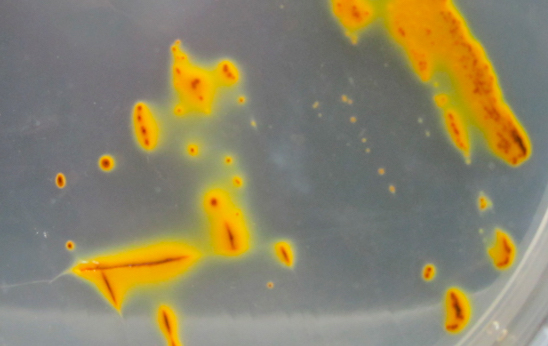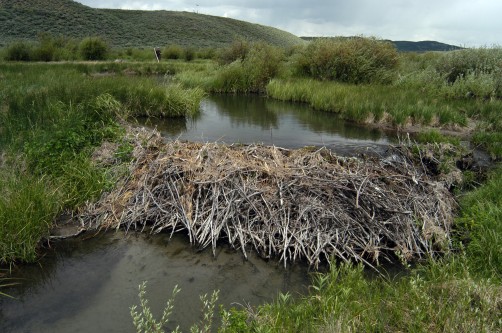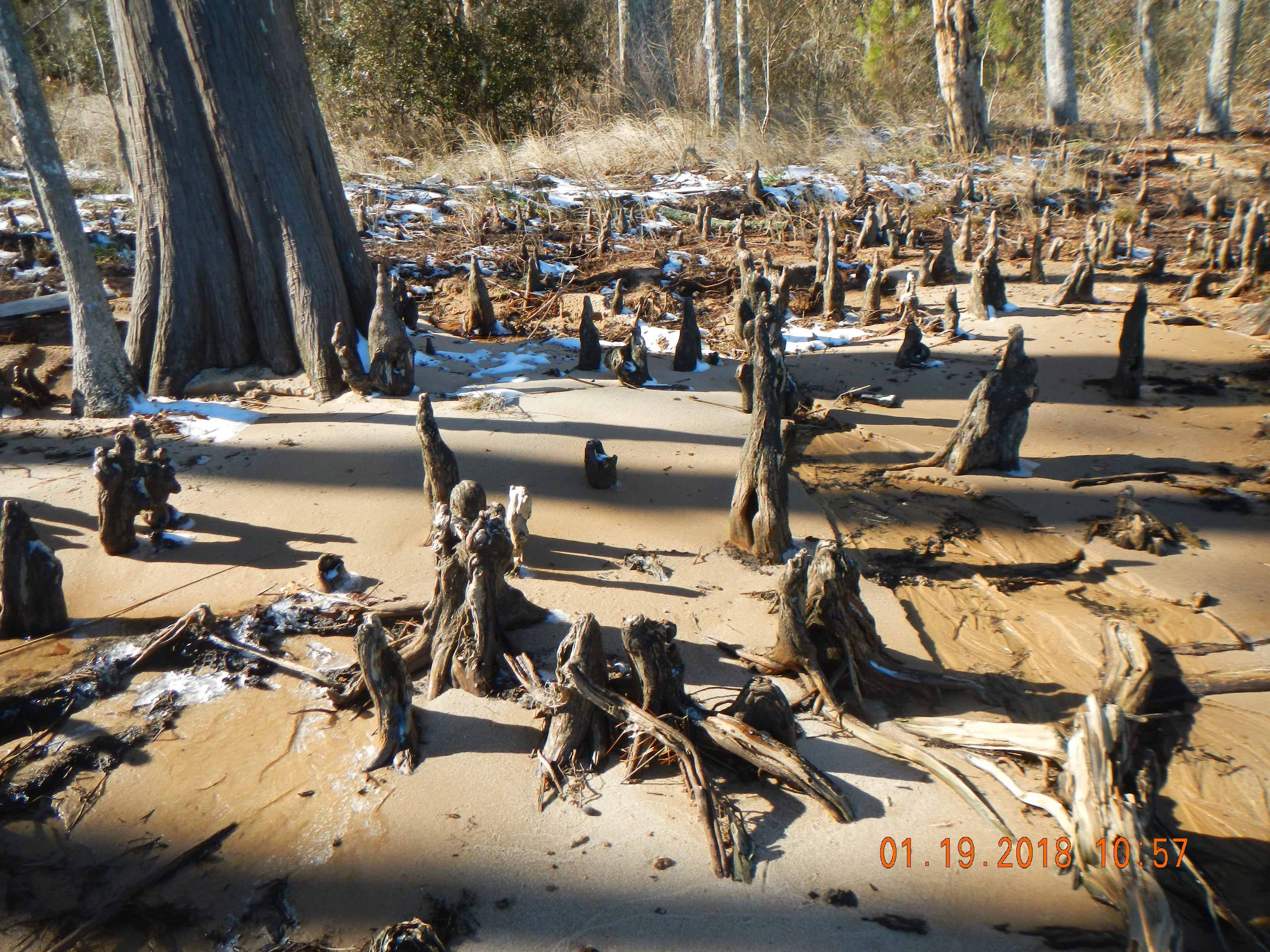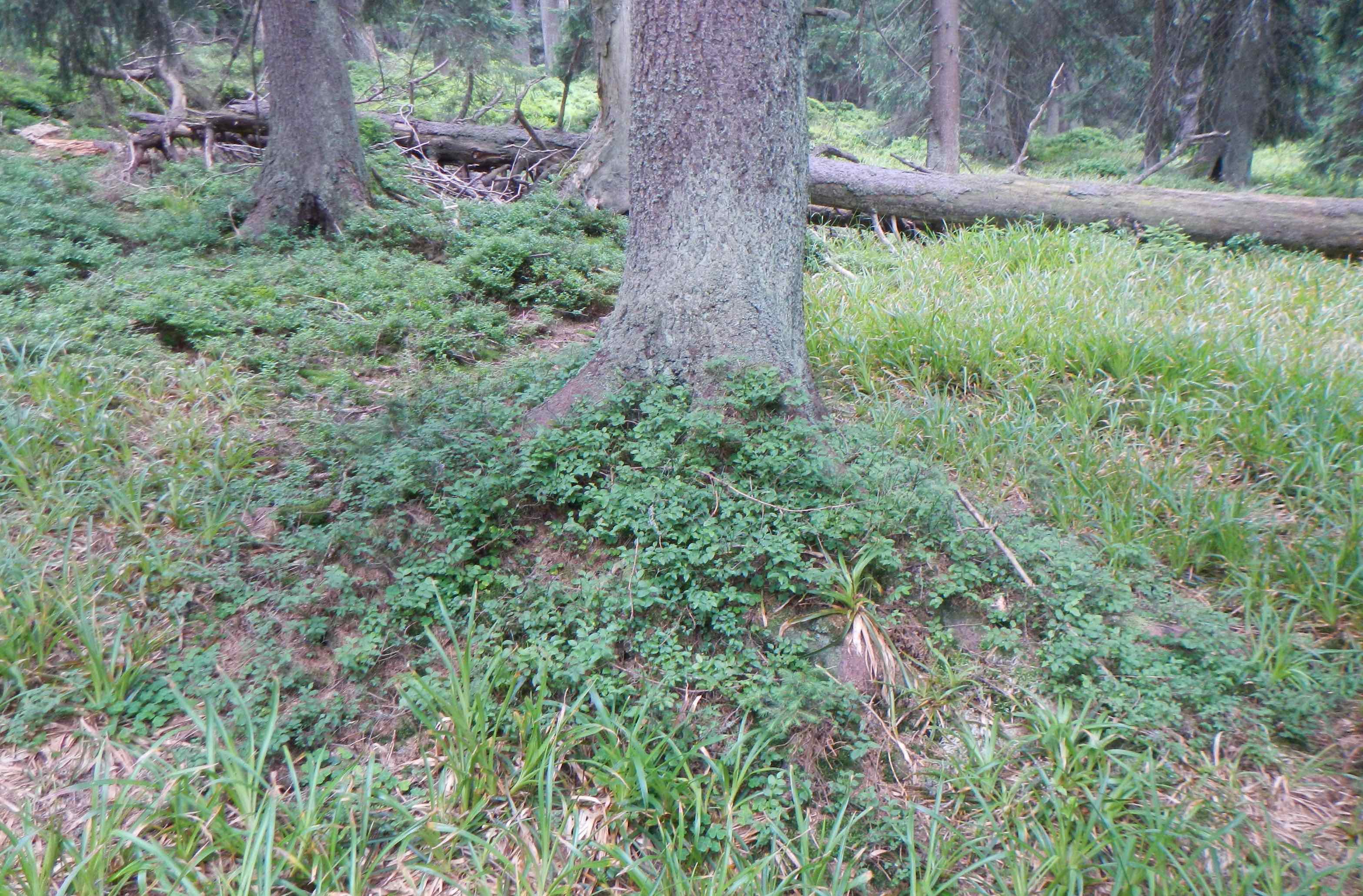BIOGEOMORPHIC EQUIVALENTS & FUNCTIONAL GROUPS
During some recent fieldwork doing forest biogeomorphology with colleagues in the Czech Republic, the idea of biogeomorphic equivalents came up. A biogeomorphic ecosystem engineer organism has a biogeomorphic equivalent if another species can potentially do the same biogeomorphic job. For example, bacteria that consume iron are important agents of weathering. There exist numerous species of iron-eating microbes, so if one is eliminated for whatever reason, another takes its place. Thus these Fe-processing bacteria have biogeomorphic equivalents.

Acidophilous iron-oxidizing bacteria (USGS photo).
On the other hand, there exists no biogeomorphic equivalent for the stream-damming effects of beavers. The disappearance of Castor canadensis from a landscape means the loss of their biogeomorphic effects, as no other organism (save humans, of course), dams up streams.

Wyoming beaver dam (photo: Wildlife Conservation Society).
The notion of equivalents raises a number of interesting questions for geomorphology, ecology, and environmental management. If an organism has no biogeomorphic equivalent, then its loss has implications well beyond the biological and ecological--and the same goes for the introduction of a new species. The reintroduction of beavers, for instance, has been used as a stream restoration tool, to partly reverse the effects of earlier beaver removal.
We also have to consider equivalency as a matter of degree, and with respect to particular effects. In some tidal freshwater rivers of the southeastern U.S., for example, sea-level rise is resulting in reduction of bald cypress and an increase in tupelo gum (aka water tupelo). The trees occupy similar ecological niches; both grow in swamps and along slow-moving streams and develop wide, buttressed trunks (they often grow together in the same habitat). There is, no doubt, some overlap in their biogeomorphic impacts, particularly with respect to sediment trapping and stabilization of riparian and wetland substrates. However, cypress develops subaerial root structures called "knees" that tupelo does not have. These knees have significant (though not well studied) effects on hydraulic roughness, and on resistance of banks and shorelines to erosion. Thus tupelo gum is only a partial biogeomorphic equivalent of cypress.

Cypress knees, Neuse River estuary shoreline, North Carolina.
In forests, tree species may have biogeomorphic equivalents with respect to slope stabilization and bioprotection, but not with respect to other factors. In the Czech forests where I was recently, for instance, various factors (climate, natural and human disturbances, succession, forest management) have resulted in the decline of beech and increase of Norway spruce (or vice versa). These trees have fundamentally different impacts with respect to uprooting dynamics, root architecture (and phenotypic plasticity with respect to root adaptations to substrates), surface mounding and mass displacement, litter chemistry (which affects weathering), and production of stemwash and trunkwash.

Basal mounding and hummocky topoography created by Norway Sspruce, Jeliscky Mountains, Czech Republic.
It may also be useful to think about biogeomorphic functional groups. Functional groups are fairly broadly and variously defined in ecology, but generally represent organisms--not necessarily genetically or evolutionarily related--that perform similar roles and functions in ecosystems. For example, iron-oxidizing, calcite-precipitating, and sulfate-reducing bacteria would represent three biogeomorphic functional groups that are entirely consistent with functional groups in microbial ecology. On the other hand, I'd have more trouble arguing that there exists, say, a tree-uprooting functional group, as the same species might uproot or not depending on the environmental context.
Peat-forming mosses, for instance, could readily be defined as a biogeomorphic functional group. But what about, say, ants that build mounds? These are important biogeomorphic agents in many landscapes, but the set of mound-building ants includes those that build tiny mounds varying over several orders of magnitude in size, and mounds made entirely of mineral soil or vegetative matter, and lots in between.

These ants in the Sumava Mountains (Czech Republic/Germany) build large mounds, but almost entirely of spruce needles and plant litter rather than mineral soil.
By starting to think about biogeomorphic equivalents and functional groups, however, we can perhaps begin to frame the ever-expanding base of biogeomorphic knowledge in terms directly applicable to environmental management. We can also hopefully gain some new scientific insights. For example, the bacterial functional groups and biogeomorphic equivalents mentioned above all relate to "eating" or using particular resources--if one microbe is not going to consume the iron, then something else will. Peat-forming mosses occupy habitats that, if they don't utilize, something else will. By doing what they do, the bacteria will perform their biogeomorphic roles. By living and dying in anaerobic environments, the mosses are likely to form peat. By identifying common traits of biogeomorphic equivalents and functional groups (if any), we may be able to gain further insight into reciprocal interactions among landforms, surface processes, and biota.
--------------------------------------
26 July 2018
